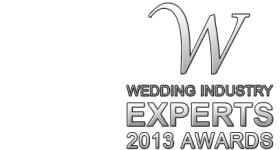 When we started Bloomsbury Films in 2006 we filmed all our events with a Sony PD170 camera. This was the ideal camera for documentary and events work since it featured the professional DVCAM format, had XLR sound inputs and a decent zoom lens. A couple of years earlier I had shot a drama film with this camera and couldn’t imagine anything better….
When we started Bloomsbury Films in 2006 we filmed all our events with a Sony PD170 camera. This was the ideal camera for documentary and events work since it featured the professional DVCAM format, had XLR sound inputs and a decent zoom lens. A couple of years earlier I had shot a drama film with this camera and couldn’t imagine anything better….
However, HD filming came along and with it a switch to widescreen (16×9) aspect ratio… So in 2008 we upgraded to Sony HDV Z7 cameras. We chose this model over the Sony Z1 (already slightly dated by then) because it worked much better in low light. We also trialled the Sony EX-1 but the cost of its proprietary SxS Media was prohibitive. We liked the Z7 because it had dual format recording (tape and CF card) and an interchangeable lens mount – which was very sexy.
I was convinced at the time we’d be using DigiPrime lenses on it just like in the Sony brochure. But we never did. And the dual format recording was erratic at times. Nevertheless, the Z7 had a beautiful Zeiss lens and proved to be a good choice of camera that lasted us many years. It became one of Sony’s most popular cameras and when we finally sold them in 2012 we got a substantial proportion of our original purchase price back.
But the reality is our ambitions to use the Z7 as a cinema camera weren’t realised and in any case another shift in the industry had already started which would overtake its nascent potential. DSLR film-making began in late 2009 as something of a cult movement attracting just a handful of determined enthusiasts. I knew about it at the time, but honestly held the common view (at least then) that DSLR cameras weren’t suitable for filming and that any advantages they had would be incorporated into the next Sony video cameras. So we just waited…
And waited.. And waited..
By 2011 we found ourselves somewhat behind the curve as DSLR film-making became increasingly mainstream. Yes, they were still very primitive as video cameras, but the footage they produced punched way above their price point. For example a £1500 Canon 7D body could produce footage as good as a cinema camera 20 times the price. Whatever the practical issues this meant our films, which were still being shot on Z7 cameras, were looking worryingly dated.
Consequently, we decided to film our first job with a Canon 5D Mkii DSLR camera in June 2011 (see Richard & Samantha below). To circumnavigate the problems of sound recording and recording duration, we filmed it in dual format – ie one DSLR and one Z7 video camera. It was the right way to begin, except the difference in quality between the two cameras was a little obvious in the edit. This trailer mostly favours the DSLR footage.
Bloomsbury Films ® | Samantha & Richard’s Wedding from Bloomsbury Films ® on Vimeo.
The thing about DSLR film-making is that when used properly it is a cinematic format rather than a documentary video format. That is because of the larger sensor size in these cameras and the scope for using interchangeable lenses, filters, focus control, external sound recording and specialist stabilisation. However, this all adds complications to the filming process which is best managed in a controlled (i.e. staged drama) environment, rather than a live (i.e. event documentary) environment.
During 2011 we trialled various new cameras that were coming onto the market, including the Sony FS100, Panasonic AF101, Canon C300 and Sony F3. While each had their quirks, there was no turning back with large sensor cameras. In early 2012 we took the plunge and invested in the newly released Canon 5D mkiii. We combined our cameras with Canon & Zeiss lenses, Edelkrone rigs, Zoom H4n recorders and Miller tripods. From that point on we filmed exclusively with DSLR cameras.
Since then we have continued this journey, refining our (frankly complicated) workflow in an effort to regain at least some of the efficiency of the Z7 days. Of course having switched from videography to cinematography we will never quite achieve that, but we have learned a lot of valuable lessons. In particular, we ditched the Edelkrone rigs in favour of Zacuto ones and invested in some Canon C100 cameras to complement our 5Ds. This enabled us to circumnavigate sound recording issues and get rid of the messy process of external recording to Zoom H4ns.

Thankfully, this now means less time is spent wrangling equipment and more time spent being creative. Which is what I love… After all the initial scepticism, I have completely fallen in love with the Canon 5D mkiii and enjoy finding ever more inventive ways of using this unassuming ‘video’ camera. It is currently my weapon of choice and below (Jennifer & James) is a more recent film made with it. Of course, I don’t know how long it will be before we are changing our cameras yet again, but I suspect not too soon. With 3D losing some of its momentum, we’ll probably have to wait for 4k to make a substantial move forward….
Andrew Cussens is the Director of Bloomsbury Films. For more information about wedding & event filming skills, please check out the Bloomsbury Films Academy.
Bloomsbury Films ® | Jennifer & James’s Wedding from Bloomsbury Films ® on Vimeo.



Speak Your Mind